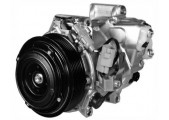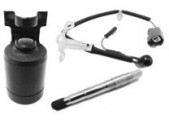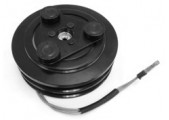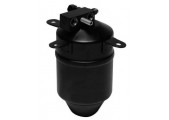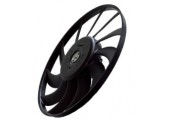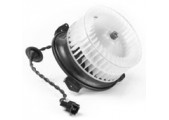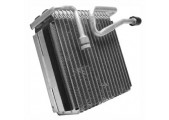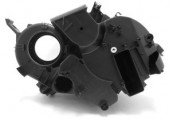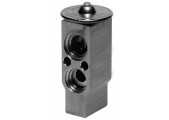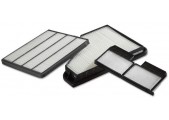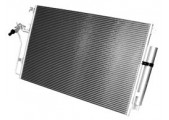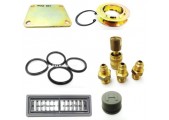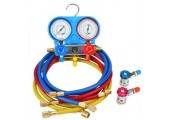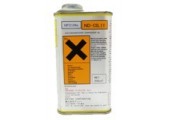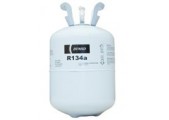All About Air conditioning
The Compressor
The compressor is the heart of the system. Just like your heart pumps blood through your body at a specific flow rate and pressure, the compressor pumps the refrigerant through the air conditioning system at a designed flow rate and pressure.
When the refrigerant enters the compressor it is in a vapor st...
All About Air conditioning
The Compressor
The compressor is the heart of the system. Just like your heart pumps blood through your body at a specific flow rate and pressure, the compressor pumps the refrigerant through the air conditioning system at a designed flow rate and pressure.
When the refrigerant enters the compressor it is in a vapor state. It enters the compressor because it is literally being sucked into it. That is why the side of the compressor where refrigerant enters is called the suction side or low pressure side. As its’ name suggests the compressor compresses the vapor as it is being pumped through it. When a vapour is compressed both the pressure and temperature of that vapour increases. The vapour leaving the compressor is very hot. You will get burnt if you were to touch the copper refrigerant lines coming off of the compressor.
The Condenser
The high temperature refrigerant passes into a condenser coil. As the vapor refrigerant travels through the coil, air from a fan passes over the coil to cool the vapor refrigerant. As the vapour cools, it condenses and becomes a liquid, this is referred to as a “change of state”. This “change of state” from vapour to liquid is essential. You may be somewhat familiar with a typical home system where the condensing unit sits outside. When operating, you can place your hand over this unit and feel the warm air being blown out. Inside this condensing unit high temperature vapour refrigerant is entering into it, as the heat energy in the vapour is removed by blowing air across the condenser coil, the vapour changes to a liquid. You will soon see that the heat being blown from the condensing unit is the heat that used to be in your home.
The Expansion Valve
The expansion valve controls the flow of the liquid refrigerant to the next component which is the evaporator. This is a dividing point between the high pressure and low pressure sides of the system. As this high pressure liquid is passing through the expansion valve and into the evaporator the pressure drops.
The Evaporator
After leaving the expansion valve the refrigerant immediately enters a coil called the evaporator. This coil or evaporator has a fan blowing across it. As the refrigerant enters the coil at a lower pressure it begins to bubble and boil and “change state” back to a vapour. During this process of changing state, energy in the form of heat is being removed from the air passing over the coil and is being absorbed by the refrigerant. The heat that was in the air is transferred into the refrigerant. Since heat was removed from the air blowing over the evaporator coil, the air leaving the evaporator coil is cold. You see that an air conditioner makes cold air by having the heat that is in the air absorbed into the refrigerant.
Now that heat from your car is in the refrigerant, what do we do with it? The heated refrigerant is sucked into the compressor and pumped back to the condenser coil. Here in the condenser the heat that was earlier absorbed by the refrigerant in the evaporator section from the space we are cooling is released and removed. The process of the refrigerant “changing states” from vapour to liquid (releasing heat through the condenser) and from vapour to liquid (absorbing heat in the evaporator) is how an air conditioner works.
A/C Parts There are no products in this category.
Subcategories
-
COMPRESSORS
The compressor is the heart of a vehicle's air conditioning system, circulating the refrigerant that is vital to proper operation.
It's precision is critical with precise internal parts, measured as accurate as of any perfect engineering equipment.
When it comes to new compressors, you can't do better than going with a unit manufactured by the OE supplier, or our high quality aftermarket range. -
COMPRESSOR PARTS
Various parts and component that made up the complete compressor.
-
CLUTCH / PULLEYS
The A/C compressor is essentially the working core of a vehicle's A/C system. When consumers turn on their A/C units, the A/C compressor starts to compress refrigerant in the system. This compression creates high pressure and raises the temperature of the refrigerant before it enters the A/C condenser. The A/C compressor clutch is in charge of alerting the compressor to start this compression. In other words, the compressor clutch is responsible for communicating to the A/C compressor when to start and stop operating.
-
RECEIVER DRIER
The receiver drier is one of the key component of the AC loop. Its function is to receiver and store liquid refrigerant from the condenser. At the same time, it traps water and retain impurities and particles.
-
FAN ASSEMBLY
Fan assembly consists of motor and fan assembled in a shroud located at the front of the condenser/ radiator.
It provides cooling to the operating high-pressure high-temperature condenser and radiator to prevent them from overheating. -
BLOWER
Blower motor is a key part of the AC loop, it is generally located near the evaporator.
Blower motor controls the speed and ensure sufficient air flow into the cabin, allowing comfort and demist the windscreen of the car. -
COOLING COIL
The cooling coil is the main component inside the evaporator assembly.
The purpose of the evaporator coil is to remove heat from the system providing cold air into the cabin. -
EVAPORATOR
The evaporator is the assembly encasing the evaporator (cooling) coil, thermal expansion valve and cabin filter. Function of the evaporator assembly is to remove heat and provide cold air for the cabin.
-
EXPANSION VALVE
The thermal expansion valve (TXV) is a precise devise, which is designed to regulate the rate at which the liquid refrigerant flows into the evaporator.
-
CABIN FILTER
The cabin filter works to keep pollutants, dust and dirt out of the cabin.
Frequent changing of the filter is necessary and will keep everyone inside the car a bit healthier. -
CONDENSER
The refrigerant enters the condenser as a high-pressure vapour, as it flows through the condenser and cools, it turns into a cooler high-pressure liquid.
It releases heat from the AC system into the atmosphere. -
AC SMALL COMPONENTS
Small parts which are essential in the air-conditioning loop and system.
-
TOOLS
Tools that are necessary in the repair and installation of various components in an automotive AC system.
-
LUBRICANTS
Liquid and Gas used in an air-conditioning system such as refrigerant gas, compressor oil, silicon oil.
-
REFRIGERANT GAS
REFRIGERANT GAS
A/C Parts
-
A/C Parts
-
COMPRESSORS
- ACURA
- ALFA
- ASTON MARTIN
- AUDI
- BMW
- BUICK
- CADILLAC
- CATERPILLAR
- CHERY
- CHEVROLET
- CHRYSLER
- CITROEN
- DAEWOO
- DAF
- DAIHATSU
- DODGE
- FIAT
- FORD
- GMC
- GREAT WALL
- HINO
- HITACHI
- HONDA
- HUMMER
- HYUNDAI
- INFINITI
- ISUZU
- IVECO
- JAGUAR
- JEEP
- JOHN DEERE
- KOBELCO
- KOMATSU
- KIA
- LANDROVER
- LAVERDA
- LEXUS
- LIEBEHRR
- LINCOLN
- MAN
- MAZDA
- MERCEDES
- MERCURY
- MG
- MINI COOPER
- MITSUBISHI
- NEW HOLLAND
- NISSAN
- OPEL
- PEUGEOT
- PORSCHE
- RENAULT
- SAAB
- SCANIA
- SEAT
- SKODA
- SSANGYONG
- SUBARU
- SUZUKI
- TOYOTA
- VOLKSWAGEN
- VOLVO
- UNIVERSAL
- SUBROS
- BYD
- TESLA
- BENTLEY
- MASERATI
- FERRARI
- LAMBOGHINI
- PROTON
- GEELY
- ROLLS ROYCE
- RAM
- PONTIAC
- TATA
- HOLDEN
- PERODUA
- LOTUS
- NAVISTAR
- FREIGHTLINER
- GENESIS
- BUGATTI
- KENSWORTH
- MACK
- FOTON
- WESTERN STAR
- ASHOK LEYLAND
- CASE IH
- KUBOTA
- CLAAS
- YANMAR
- JCB
- BOBCAT
- FENDT
- MASSEY FERGUSON
- DACIA
- HAVAL
- HONGQI
- LADA
- LANCIA
- LUCID
- MCLAREN
- MAHINDRA
- MAXUS
- NIO
- OMODA
- POLSTAR
- RVI
- SATURN
- SMART
- VINFAST
- WULING
- YUTONG
- COMPRESSOR PARTS
- CLUTCH / PULLEYS
-
RECEIVER DRIER
- AUDI
- BMW
- CHEVROLET
- CHRYSLER
- CITROEN
- DAEWOO
- DAIHATSU
- DODGE
- FORD
- HINO
- HONDA
- HYUNDAI
- ISUZU
- JEEP
- KIA
- LANDROVER
- LEXUS
- MAN
- MASSEY FERGUSON
- MAZDA
- MERCEDES
- MINI COOPER
- MITSUBISHI
- NISSAN
- OPEL
- PEUGEOT
- PORSCHE
- RENAULT
- SSANGYONG
- SUBARU
- SUZUKI
- TOYOTA
- VOLKSWAGEN
- VOLVO
- UNIVERSAL
- SKODA
- SEAT
- ALFA
- ASHOK LEYLAND
- ASTON MARTIN
- BENTLEY
- BOBCAT
- BUGATTI
- BUICK
- BYD
- CADILLAC
- CASE IH
- CATERPILLAR
- CHERY
- CLAAS
- DAF
- FENDT
- FERRARI
- FIAT
- FOTON
- FREIGHTLINER
- GEELY
- GENESIS
- GMC
- GREAT WALL
- HITACHI
- HOLDEN
- HUMMER
- INFINITI
- IVECO
- JAGUAR
- JCB
- JOHN DEERE
- KENSWORTH
- KOBELCO
- KOMATSU
- KUBOTA
- LAMBOGHINI
- LANCIA
- LAVERDA
- LIEBHRR
- LINCOLN
- LOTUS
- MACK
- MASERATI
- MERCURY
- MG
- NAVISTAR
- NEW HOLLAND
- PERODUA
- PONTIAC
- PROTON
- RAM
- ROLLS ROYCE
- SAAB
- SCANIA
- SUBROS
- TATA
- TESLA
- WESTERN STAR
- YANMAR
- ACURA
- DACIA
- HAVAL
- HONGQI
- MAXUS
- MACLAREN
- NIO
- OMODA
- POLSTAR
- RVI
- SATURN
- SMART
- VINFAST
- WULING
- YUTONG
- LADA
- MAHINDRA
- MCLAREN
-
FAN ASSEMBLY
- AUDI
- BMW
- CHEVROLET
- CITROEN
- DAEWOO
- DAIHATSU
- FIAT
- FORD
- HINO
- HONDA
- HYUNDAI
- ISUZU
- KIA
- KOMATSU
- LANDROVER
- LEXUS
- MAZDA
- MERCEDES
- MITSUBISHI
- NISSAN
- OPEL
- PEUGEOT
- PORSCHE
- PROTON
- RENAULT
- SAAB
- SEAT
- SKODA
- SSANGYONG
- SUBARU
- SUZUKI
- TOYOTA
- VOLKSWAGEN
- VOLVO
- UNIVERSAL
- MINI COOPER
- CHRYSLER
- YUTONG
- YANMAR
- WULING
- WESTERN STAR
- VINFAST
- TESLA
- TATA
- SUBROS
- SMART
- SCANIA
- SATURN
- RVI
- ROLLS ROYCE
- RAM
- PONTIAC
- POLSTAR
- PERODUA
- OMODA
- NIO
- NEW HOLLAND
- NAVISTAR
- MG
- MERCURY
- MCLAREN
- MAXUS
- MASSEY FERGUSON
- MASERATI
- MAN
- MAHINDRA
- MACK
- LUCID
- LOTUS
- LINCOLN
- LIEBHRR
- LAVERDA
- LANCIA
- LAMBOGHINI
- LADA
- KUBOTA
- KOBELCO
- KENSWORTH
- JOHN DEERE
- JEEP
- JCB
- JAGUAR
- IVECO
- INFINITI
- HUMMER
- HONGQI
- HOLDEN
- HITACHI
- HAVAL
- GREAT WALL
- GMC
- GENESIS
- GEELY
- FREIGHTLINER
- FOTON
- FERRARI
- FENDT
- DODGE
- DAF
- DACIA
- CLAAS
- CHERY
- CATERPILLAR
- CASE IH
- CADILLAC
- BYD
- BUICK
- BUGATTI
- BOBCAT
- BENTLEY
- ACURA
- ALFA
- ASHOK LEYLAND
- ASTON MARTIN
-
BLOWER
- AUDI
- BMW
- CHEVROLET
- CITROEN
- DAEWOO
- DAF
- DAIHATSU
- FIAT
- FORD
- HINO
- HITACHI
- HONDA
- HYUNDAI
- ISUZU
- KIA
- KOMATSU
- LANDROVER
- LEXUS
- MAN
- MAZDA
- MERCEDES
- MITSUBISHI
- NISSAN
- OPEL
- PEUGEOT
- PORSCHE
- RENAULT
- SEAT
- SKODA
- SSANGYONG
- SUBARU
- SUZUKI
- TOYOTA
- VOLKSWAGEN
- VOLVO
- UNIVERSAL
- MINI COOPER
- ACURA
- ALFA
- ASHOK LEYLAND
- ASTON MARTIN
- BENTLEY
- BOBCAT
- BUGATTI
- BUICK
- BYD
- CADILLAC
- CASE IH
- CATERPILLAR
- CHERY
- CHRYSLER
- CLAAS
- DACIA
- DODGE
- FENDT
- FERRARI
- FOTON
- FREIGHTLINER
- GEELY
- GENESIS
- GMC
- GREAT WALL
- HAVAL
- HOLDEN
- HUMMER
- HONGQI
- INFINITI
- IVECO
- JAGUAR
- JCB
- JEEP
- JOHN DEERE
- KENSWORTH
- KOBELCO
- KUBOTA
- LADA
- LAMBOGHINI
- LANCIA
- LAVERDA
- LIEBHRR
- LINCOLN
- LOTUS
- LUCID
- MACK
- MAHINDRA
- MASERATI
- MASSEY FERGUSON
- MAXUS
- MCLAREN
- MERCURY
- MG
- NAVISTAR
- NEW HOLLAND
- NIO
- OMODA
- PERODUA
- POLSTAR
- PONTIAC
- PROTON
- RAM
- ROLLS ROYCE
- RVI
- SAAB
- SATURN
- SCANIA
- SMART
- SUBROS
- TATA
- TESLA
- VINFAST
- WESTERN STAR
- WULING
- YANMAR
- YUTONG
-
COOLING COIL
- AUDI
- BMW
- CHEVROLET
- CHRYSLER
- CITROEN
- DAEWOO
- DAIHATSU
- DODGE
- FIAT
- FORD
- FORMULA
- HINO
- HONDA
- HYUNDAI
- ISUZU
- JAGUAR
- JEEP
- KIA
- KOMATSU
- LANDROVER
- LEXUS
- MAZDA
- MERCEDES
- MINI BUS
- MINI COOPER
- MITSUBISHI
- NISSAN
- OPEL
- PEUGEOT
- PORSCHE
- RENAULT
- SAAB
- SEAT
- SKODA
- SSANGYONG
- SUBARU
- SUZUKI
- TOYOTA
- VOLKSWAGEN
- VOLVO
- UNIVERSAL
- PERODUA
- ALFA ROMEO
- MG
- BYD
- TESLA
- BENTLEY
- FERRARI
- LAMBOGHINI
- PROTON
- GEELY
- ROLLS ROYCE
- RAM
- PONTIAC
- TATA
- HOLDEN
- LOTUS
- NAVISTAR
- FREIGHTLINER
- GENESIS
- BUGATTI
- KENSWORTH
- MACK
- FOTON
- WESTERN STAR
- ASHOK LEYLAND
- MASSEY FERGUSON
- YANMAR
- JCB
- BOBCAT
- CLAAS
- FENDT
- KUBOTA
- CASE IH
- NEW HOLLAND
- LINCOLN
- CADILLAC
- BUICK
- MERCURY
- GREAT WALL
- HUMMER
- IVECO
- MAN
- JOHN DEERE
- YUTONG
- WULING
- VINFAST
- SUBROS
- SMART
- SCANIA
- SATURN
- RVI
- POLSTAR
- OMODA
- NIO
- MCLAREN
- MAXUS
- MASERATI
- MAHINDRA
- LUCID
- LIEBHRR
- LAVERDA
- LANCIA
- LADA
- KOBELCO
- INFINITI
- HONGQI
- HITACHI
- HAVAL
- GMC
- DAF
- DACIA
- CHERY
- CATERPILLAR
- ASTON MARTIN
- ACURA
- EVAPORATOR
-
EXPANSION VALVE
- ALFA
- AUDI
- BUICK
- BMW
- CHEVROLET
- CHRYSLER
- CITROEN
- DAF
- DAIHATSU
- DODGE
- FIAT
- FORD
- HINO
- HONDA
- HYUNDAI
- ISUZU
- JAGUAR
- JEEP
- KIA
- LANDROVER
- LEXUS
- MAN
- MAZDA
- MERCEDES
- MINI COOPER
- MITSUBISHI
- NAVISTAR
- NISSAN
- OPEL
- PEUGEOT
- PORSCHE
- RENAULT
- SEAT
- SKODA
- SAAB
- SUBARU
- SUZUKI
- SCANIA
- SSANGYONG
- TOYOTA
- VOLKSWAGEN
- VOLVO
- OTHERS
- UNIVERSAL
- ROLLS ROYCE
- YUTONG
- YANMAR
- WULING
- WESTERN STAR
- VINFAST
- TESLA
- TATA
- SUBROS
- SMART
- SATURN
- RVI
- RAM
- PROTON
- PONTIAC
- POLSTAR
- PERODUA
- OMODA
- NIO
- NEW HOLLAND
- MG
- MERCURY
- MCLAREN
- MAXUS
- MASSEY FERGUSON
- MASERATI
- MAHINDRA
- MACK
- LUCID
- LOTUS
- LINCOLN
- LIEBHRR
- LAVERDA
- LANCIA
- LAMBOGHINI
- LADA
- KUBOTA
- KOMATSU
- KOBELCO
- KENSWORTH
- JOHN DEERE
- JCB
- IVECO
- INFINITI
- HUMMER
- HONGQI
- HOLDEN
- HITACHI
- HAVAL
- GREAT WALL
- GMC
- GENESIS
- GEELY
- FREIGHTLINER
- FOTON
- FERRARI
- FENDT
- DAEWOO
- DACIA
- CLAAS
- CHERY
- CATERPILLAR
- CASE IH
- CADILLAC
- BYD
- BUGATTI
- BOBCAT
- BENTLEY
- ACURA
- ASHOK LEYLAND
- ASTON MARTIN
-
CABIN FILTER
- AUDI
- BMW
- CHEVROLET
- CITROEN
- DAEWOO
- DAIHATSU
- FORD
- HINO
- HONDA
- HYUNDAI
- ISUZU
- KIA
- LANDROVER
- LEXUS
- MAZDA
- MERCEDES
- MITSUBISHI
- NISSAN
- OPEL
- PEUGEOT
- PORSCHE
- RENAULT
- SSANGYONG
- SUBARU
- SUZUKI
- TOYOTA
- VOLKSWAGEN
- VOLVO
- UNIVERSAL
- ACURA
- ALFA
- ASHOK LEYLAND
- ASTON MARTIN
- BENTLEY
- BOBCAT
- BUGATTI
- BYD
- CADILLAC
- CASE IH
- CATERPILLAR
- CLAAS
- DACIA
- DAF
- DODGE
- FENDT
- FERRARI
- FIAT
- FOTON
- FREIGHTLINER
- GEELY
- GENESIS
- GMC
- GREAT WALL
- HAVAL
- HITACHI
- HOLDEN
- HONGQI
- HUMMER
- INFINITI
- IVECO
- JAGUAR
- JCB
- JEEP
- JOHN DEERE
- KENSWORTH
- KOBELCO
- KOMATSU
- KUBOTA
- LADA
- LAMBOGHINI
- LANCIA
- LAVERDA
- LIEBHRR
- LINCOLN
- LOTUS
- LUCID
- MACK
- MAHINDRA
- MAN
- MASERATI
- MASSEY FERGUSON
- MAXUS
- MCLAREN
- MERCURY
- MG
- MINI COOPER
- NAVISTAR
- NEW HOLLAND
- NIO
- OMODA
- PERODUA
- POLSTAR
- PONTIAC
- PROTON
- RAM
- ROLLS ROYCE
- RVI
- SAAB
- SATURN
- SCANIA
- SEAT
- SKODA
- SMART
- SUBROS
- TATA
- TESLA
- VINFAST
- WESTERN STAR
- WULING
- YANMAR
- YUTONG
- CHERY
- CHRYSLER
- BUICK
-
CONDENSER
- AUDI
- BMW
- CHEVROLET
- CHRYSLER
- CITROEN
- DAEWOO
- DAIHATSU
- DODGE
- FIAT
- FORD
- FREIGHTLINER
- HINO
- HONDA
- HYUNDAI
- INFINITI
- ISUZU
- IVECO
- JAGUAR
- JEEP
- KIA
- KOMATSU
- LANCIA
- LANDROVER
- LEXUS
- MAZDA
- MERCEDES
- MINI COOPER
- MITSUBISHI
- NISSAN
- OPEL
- PEUGEOT
- PORSCHE
- RENAULT
- SEAT
- SKODA
- SSANGYONG
- SUBARU
- SUZUKI
- TOYOTA
- VOLKSWAGEN
- VOLVO
- UNIVERSAL
- MG
- BYD
- TESLA
- FERRARI
- LAMBOGHINI
- MASERATI
- PROTON
- GEELY
- ROLLS ROYCE
- RAM
- PONTIAC
- TATA
- HOLDEN
- PERODUA
- LOTUS
- NAVISTAR
- GENESIS
- BUGATTI
- KENSWORTH
- MACK
- FOTON
- WESTERN STAR
- ASHOK LEYLAND
- MASSEY FERGUSON
- YANMAR
- JCB
- BOBCAT
- CLAAS
- FENDT
- KUBOTA
- CASE IH
- NEW HOLLAND
- LINCOLN
- CADILLAC
- BUICK
- CATERPILLAR
- MERCURY
- GREAT WALL
- HUMMER
- JOHN DEERE
- ACURA
- ALFA
- BENTLEY
- CHERY
- DAF
- GMC
- HITACHI
- MAN
- LAVERDA
- LIEBHRR
- ASTON MARTIN
- DACIA
- HAVAL
- HONGQI
- MAHINDRA
- MAXUS
- MCLAREN
- NIO
- OMODA
- POLSTAR
- RVI
- SAAB
- SATURN
- SCANIA
- SMART
- SUBROS
- VINFAST
- WULING
- YUTONG
- KOBELCO
- LADA
- LUCID
- AC SMALL COMPONENTS
- TOOLS
- LUBRICANTS
- REFRIGERANT GAS
-
COMPRESSORS
Quick Links
New products
-

TOYOTA RAV4 '18 CONDENSER
EMAS: 61-7836653 OE: 884A0-42040 (AFM)
-

TM16 2AG V-O COMPRESSOR -24V
EMAS P/N : 71-OFF0872 OEM: 815831 (OEM)
-

TM16 8PK V-O COMPRESSOR -24V
EMAS P/N : 71-OFF0873 OEM: 815836 (OEM)
-

FORD TRANSIT '06
EMAS P/N : 71-OFF0875 OE: 7C1119D629AA OEM: 7V16-1853 (OEM)
-

NISSAN QASHQAI 1.5DCI '18 CONDENSER
EMAS: 61-7012853 OE: 9211000Q0C (AFM)

